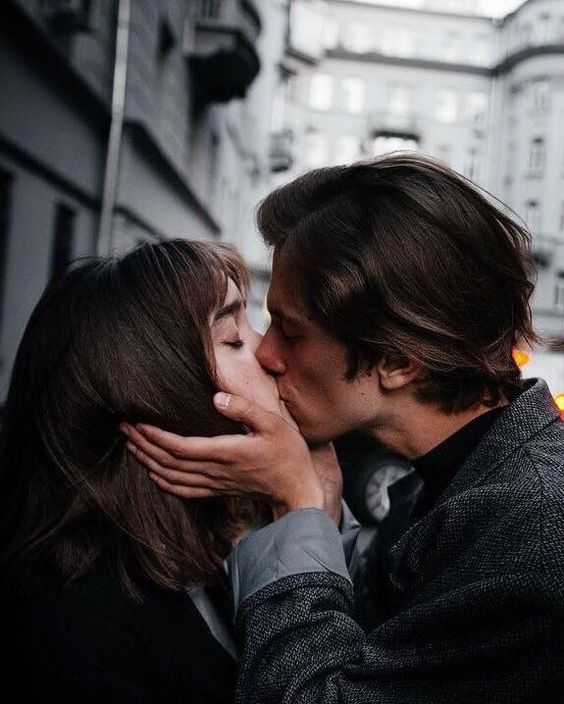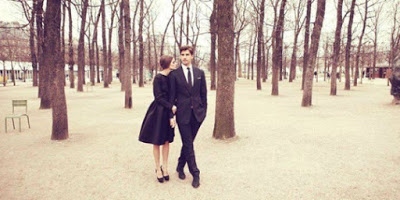 In astrology, synastry is the comparison of two individuals’ birth charts to analyze their compatibility and understand how their energies interact with each other. The meaning of “outer planet person” and “inner planet person” in synastry typically refers to individuals whose birth charts emphasize the influence of outer planets (Uranus, Neptune, and Pluto) forming cross aspects to other individuals inner planets (Sun, Moon, Mercury, Venus, and Mars). When an inner planet from one person’s chart forms an aspect with planets in another person’s chart, it often indicates a more direct and personal connection between the two individuals. The outer Planets are associated with transformational and generational energies. Their influences in synastry can bring about profound changes and challenges to the relationship.
In astrology, synastry is the comparison of two individuals’ birth charts to analyze their compatibility and understand how their energies interact with each other. The meaning of “outer planet person” and “inner planet person” in synastry typically refers to individuals whose birth charts emphasize the influence of outer planets (Uranus, Neptune, and Pluto) forming cross aspects to other individuals inner planets (Sun, Moon, Mercury, Venus, and Mars). When an inner planet from one person’s chart forms an aspect with planets in another person’s chart, it often indicates a more direct and personal connection between the two individuals. The outer Planets are associated with transformational and generational energies. Their influences in synastry can bring about profound changes and challenges to the relationship.
Pauline Stone’s book on Relationships, Astrology, and Karma presents a different perspective on astrological synastry, emphasizing the role of outer planets in controlling and influencing relationships. While the book suggests that the outer planet person is the dominant partner, serving as a teacher who dispenses karma, and the inner planet person as the pupil who submits to this karma, it also raises important questions and concerns. The author encourages readers to explore the idea that past-life behavior patterns may manifest through the medium of the outer planet person, offering an opportunity for transformation and release. However, it’s crucial to approach such ideas with a critical mind and an open heart. The idea that challenging or negative experiences in a relationship are solely the result of karma raises ethical and emotional questions. Moreover, accepting these kinds of relationships can be harmful if it leads individuals to tolerate abusive or toxic behavior, believing it’s their karma to endure such challenges.
Is it karma if you’re getting the cold shoulder from your Uranian partner, or you’re being deceived by a Neptune lover, or worse yet, abused by a Pluto partner? Is that really karma coming back to haunt you? Do you deserve all that drama and chaos in your love life? It’s a bit heavy to swallow, isn’t it?
The idea is that two people who have a significant history or connection in past lives are drawn to each other in this current incarnation. This connection can manifest as a powerful and often irresistible attraction, although it’s important to note that this attraction isn’t always positive and can sometimes even be negative, leading to feelings of dislike or apprehension upon first meeting. The key to understanding these karmic connections lies in the astrological aspect of the inner planet person’s chart being influenced by the outer planet person’s chart in significant ways. When the outer planet person’s energies strongly affect the inner planet person’s chart, it creates a magnetic pull between the two individuals. This pull is often hard to break, even if the relationship becomes detrimental, because these connections are believed to be working through unresolved karmic issues from previous lifetimes. The outer planet person can bring deep and painful issues into the inner planet person’s life, forcing them to confront these challenges head-on.
One common example of such a dynamic is when Neptune heavily influences the relationship. Neptune is associated with illusion, fantasy, and deception. In such cases, the relationship may feel nebulous, deceitful, or manipulative. Yet, there’s an irresistible attraction to the dreamlike quality of the connection. The individuals involved may find themselves repeatedly drawn back into the seductive and heady atmosphere of the relationship, even if they’ve tried to escape from it. The inner struggle in these karmic connections is often about reconciling the idealized vision of the relationship with the harsh realities of the situation. There’s a constant tension between the desire to make the relationship fit the idealized fantasy and the need to confront the painful and challenging aspects it brings into one’s life.
These karmic relationship themes are not uncommon, and many people can relate to feeling bound or pulled back into such connections despite their turbulent and chaotic nature. It’s as though there’s a deep longing to explore the higher possibilities of the relationship, even if it means navigating through its darker and more challenging aspects.
In astrology, the outer planets (Uranus, Neptune, and Pluto) are associated with transformative and often intense energies. When we find ourselves in compulsive relationships with individuals strongly influenced by these outer planets, it implies that these connections are not just casual or ordinary. They tend to be marked by intense dynamics, often with a roller-coaster-like quality where the highs are exhilarating, but the lows can be devastating. These relationships can feel almost magnetic or fated, and they may bring both ecstasy and pain. Pauline Stone’s idea that the treatment we receive from outer planet person reflects our own attunement to that planetary energy, suggesting that the dynamics of these relationships are not random. Instead, they mirror something within us. For instance, if we repeatedly find ourselves attracted to partners who are erratic and unpredictable (Uranian energy), it may be a reflection of our own need for excitement or our own internal chaos that we need to address.
According to this perspective, the people we meet in these compulsive relationships may have connections to our past lives, and the intense dynamics we experience could be linked to unresolved issues or interactions from those past lives. Similarly, we might remind the outer planet person of someone who caused them pain in the past, or we might have played a role in their past life experiences. It’s important to acknowledge that the intense energy associated with outer planets can sometimes feel overwhelming, especially for inner planet individuals (those associated with the inner planets: Sun, Moon, Mercury, Venus, and Mars). The outer planet person’s intensity, unpredictability, and power can make the inner planet person feel overpowered and vulnerable. This dynamic can indeed lead to pain and struggle in the relationship.
So, what’s the deal? Are we really just meeting ourselves in these relationships, or is it more like destiny playing out in the most dramatic way possible? I mean, who knows, right?
Astrologers often grapple with the challenge of accurately interpreting synastry charts because they must interpret two distinct sets of planetary energies. These energies are not only influenced by the positions of the natal planets at the time of birth but also by the individuals’ unique life experiences, traumas, and personal growth journeys. Nobody truly knows what has been resolved within each person, how they’ve learned to express their energies, or what emotional scars they carry. Synastry becomes a particularly popular and engaging topic when conflicts and challenges erupt between two partners. People turn to astrology to gain insights into why their relationships are so intense, why their partners act in certain ways, and why they find themselves caught in repetitive relationship cycles and dramas. These dynamics can sometimes simmer beneath the surface, only to be ignited to a fiery intensity when planetary transits activate the synastry aspects.
When exploring synastry, it’s important to move beyond the simplistic characterization of “good” and “bad” associated with inner and outer planets. Instead, astrologers strive to embrace a more balanced and nuanced approach. This involves considering the unique strengths and challenges that each planetary aspect brings to the relationship. For instance, inner planets like the Sun, Moon, Mercury, Venus, and Mars are often associated with more personal and immediate dynamics in a relationship. They reflect aspects of one’s identity, emotions, thoughts, values, and desires. On the other hand, outer planets such as Uranus, Neptune, and Pluto tend to symbolize transformative and profound energies that may be less easily accessible or understood. While a synastry chart may not provide all the answers or dictate the outcome of a relationship, it offers valuable guidance and a deeper understanding of why people are drawn together and how they can work through their issues and grow together.
Those inner planets, like the Sun, Moon, Venus, and Mars, they’re like the heart and soul of a relationship. They represent who we are, what we desire, and how we express ourselves in love and passion. And then you’ve got those outer planets – Uranus, Neptune, and Pluto – they’re like the deep, transformative forces that can shake things up and take us in a whole new direction.
Some individuals believe that the challenges faced in relationships are linked to karma, suggesting that people attract certain experiences or partners due to past actions or lessons to be learned. However, this notion can be controversial and challenging to prove. Karma is a deeply spiritual and philosophical concept, and its application to relationships can vary widely depending on personal beliefs. It’s a common understanding that no relationship is without its challenges. People come together with their own unique backgrounds, experiences, and emotional baggage. As partners work through these issues, it can be helpful to reflect on how far they’ve come over time. This reflection can offer insights into personal growth and the evolution of the relationship.
The idea that an outer planet partner’s behavior is karmic for the inner planet partner can be a contentious one. This perspective implies that one person’s negative actions or behavior are somehow predetermined or justified by cosmic forces. While exploring karmic themes in relationships can provide some individuals with a sense of understanding or closure, it’s not always the most positive or empowering way to view challenges. It can potentially lead to a victim mentality or a sense of powerlessness if someone believes that they are destined to endure difficult situations due to karma. While karmic astrology can provide intriguing insights into relationship dynamics, it’s essential not to oversimplify complex issues by attributing everything to karma. Life is multifaceted, and many factors contribute to the experiences we have in relationships.
Karmic astrology can be a fascinating and insightful tool for self-discovery and reflection, but it should be used in conjunction with critical thinking and an understanding of its limitations. Ultimately, it’s one of many approaches to gaining deeper insights into the complexities of human relationships and personal growth.
So, whether you fully buy into the idea of karma shaping your relationships or view it as one of many ways to make sense of life’s complexities, the key is to keep an open mind, learn from your experiences, and strive for healthier and more fulfilling connections with others. Ultimately, the mystery of karma and its influence in our lives adds a layer of intrigue to our personal journeys, and it’s up to you to decide how much weight to give it.












